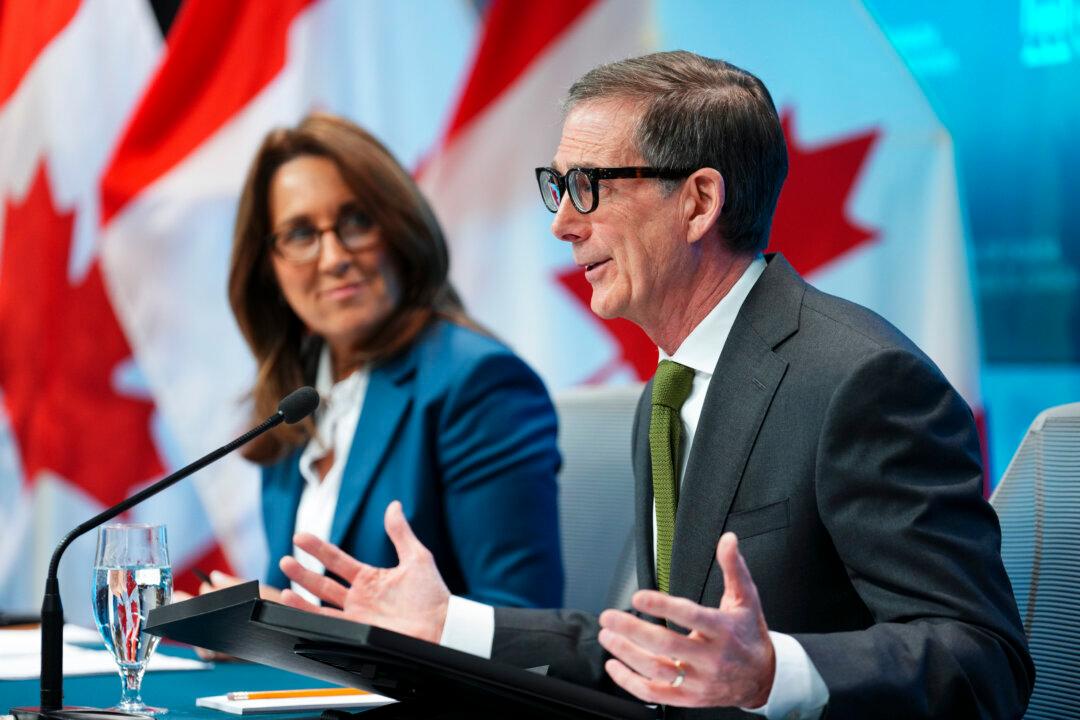Canada’s federal debt is surging toward $1 trillion. What’s worrying for some is that the feds don’t seem to be acknowledging this and at least mentioning plans for a return to normalcy.
Those who have pondered the tough decisions needed to get a handle on the debt once the pandemic has run its course suggest a gradual approach to lower deficits instead of austerity—big spending cuts and tax hikes.
It seems everybody—except the federal government—realizes that a day of reckoning looms. What the concerned are asking is not to stop spending now while the economy is reeling, but to provide some reassurance that the debt won’t get out of control.
That’s what is disturbing Parliamentary Budget Officer (PBO) Yves Giroux.
“My big concerns are how are we going to get out of this fiscal situation,” Giroux told CTV’s Question Period on May 17. “Once we get on the other end of that huge precipice, what is the government’s plan once the crisis is behind us? There doesn’t seem to be an overall plan.”
The PBO reported on April 30 that the deficit is heading to $252.1 billion, or about 12.7 percent of gross domestic product (GDP), in 2020‑21, which would be the largest by a wide margin since records began being kept in 1966‑67.
The amount of debt that’s in the economy—the closely monitored debt-to-GDP ratio—is expected to reach 48.4 percent in 2020‑21. This is the highest since 1999‑2000, but well below the 66.6 percent reached in 1995‑96.
Finance Minister Bill Morneau has not announced a date for the budget, which is normally tabled in March, and has been dodging questions regarding the size of the growing national debt.
He reiterated on May 20 that Canada has the lowest amount of debt as a share of the economy among the G7 and that the actions taken by the government will leave Canada in a stronger economy on the other side of the pandemic.
“I continue to view Canada as in a very strong position. We’re working hard to preserve our employment and our economy for the long term,” he said in Toronto.
Lessons From History
A couple of scenarios are instructive for Canada—the lengthy post-World War II period and the sudden austerity of the mid-1990s. In the first case, Canada grew its way out of debt, and in the second instance, led by a Liberal government, it showed that it could bite the bullet.
Don Drummond, adjunct professor of public policy at Queen’s University, says there’s very little chance of Canada repeating its post-WWII economic growth and policy-makers should not count on luck.
“This suggests a prudent approach to future fiscal policy, where the net debt-to-GDP ratio is gradually notched back from the 50 percent mark expected this year,” he wrote in an editorial for the C.D. Howe Institute.
One advantage, Drummond says, is that interest rates are historically low and that achieving debt sustainability depends on the economy growing faster than the rate of interest paid on the debt.
One disadvantage, though, is that Canada now has an older population and one that is aging rapidly compared to the period since the end of WWII. Statistics Canada reports that the share of seniors will rise most rapidly until 2030, as all baby boomers reach 65.
But in 1965—well into the post-WWII recovery—just 7.7 percent of Canadians were over 65. In 2018, it was already at 17.2 percent, meaning Canada has a proportionately smaller work force to generate economic growth now.
The Liberals are capable of making tough choices, as the Jean Chretien government once proved. In the mid-1990s, when the borrowing cost for 10 years was over 9 percent, it began turning a massive deficit into a sizable surplus and did so by the end of the decade. They were then able to lower taxes.
The Trudeau Liberals don’t have that added danger of high interest rates. The government can borrow for 10 years at just 0.5 percent and Canada’s rapidly deteriorating debt profile is still expected to be the best among the G7.
Another difference between today and the 1990s is that the outsized deficits aren’t expected to be persistent since many of the government’s rescue programs are short-term in nature.
Bank of Canada governor Stephen Poloz said the deferrals of tax payments will be made up over time and that being in a favourable position to deal with the CCP (Chinese Communist Party) virus, commonly known as novel coronavirus, pandemic left the feds room to manoeuvre.
“We can’t take what we see through the window right now as a permanent or long-lasting increase in fiscal deficits,” he said on May 14 after the bank released its financial system review.





